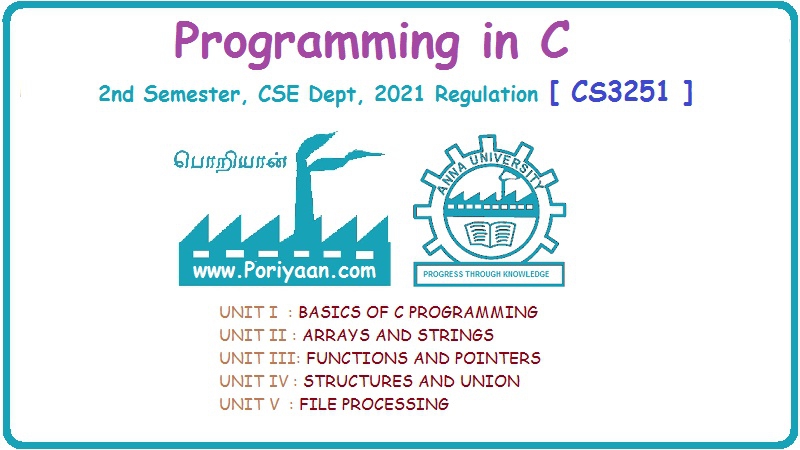Programming in C: Unit IV: Structures and Union
Memory Allocation and Deallocation for a Linked List
Programming in C
We have seen how a linked list is represented in memory. If we want to add a node to an already existing linked list, we will first find free space in the memory and then use it to store the information.
MEMORY
ALLOCATION AND DEALLOCATION FOR A LINKED LIST
We
have seen how a linked list is represented in memory. If we want to add a node
to an already existing linked list, we will first find free space in the memory
and then use it to store the information. For example, consider the linked list
given in Figures 11.5 (a) and (b). The linked list contains the roll numbers of
the students, marks obtained by them in Biology, and finally a NEXT field which
stores the address of the next node in sequence. Now, if a new student joins
the class and is asked to appear for the same test that the other students had
already taken, then the new student's marks should also be recorded in the
linked list. For this purpose, we will find a free space and store the
information there. In Figure. 11.5(a), the grey shaded portions show free
spaces, thus we have foure locations of memory available and we can use any one
of them to store our data.

Now
the question is who will take care of the memory- which part of the memory is
available and which part is occupied. When we delete a node from a linked list
then who will change the status of the memory occupied by it from occupied to
available. The answer is the operating system. Discussing the mechanism of how
the operating system does all this is out of the scope of this book. So, for
the sake of simplicity, we can say that the computer takes care of this without
any intervention from the user or the programmer. As a programmer, you just
have to take care of the code to perform insertions and deletions in the list.

However,
to have an overview of the mechanism, we will briefly discuss the basic
concept. The computer maintains a list of all free memory cells. This list of available
space is called the free pool.
We
have seen that every linked list has a pointer variable START which stores the
address of the first node of the list. Likewise, for the free pool (which is a
linked list of all free memory cells), we have a pointer variable AVAIL which
stores the address of the first free space. Let us revisit the memory
representation of the linked list storing the students' marks in Biology. We
have another pointer variable AVAIL here which stores the address of the first
free space.
Now,
when a new student's record has to be added, the memory address pointed by
AVAIL is taken and used to store the desired information. After the insertion,
the address of the next available free space is stored in AVAIL. For example,
in Figure 11.6, when the first free memory space is utilized for inserting the
new node, the AVAIL pointer will be set to contain address 6.
This
was all about inserting a new node in an already existing linked list. Now we
will talk about deleting a node or the entire linked list. When we delete a
particular node from an existing linked list or delete the entire linked list,
the space occupied by it must be given back to the free pool so that the memory
can be reused by some other program that needs memory space.

The
operating system does this task of adding the freed memory to the free pool.
The operating system will perform this operation whenever it finds the CPU idle
or whenever programs fall short of memory. The operating system scans through
all the memory cells and marks the cells being used by some other programs.
Then, it collects all those cells which are not being used and adds their
address to the free pool so that they can be reused by the programs. This
process is called garbage collection.
Programming in C: Unit IV: Structures and Union : Tag: : Programming in C - Memory Allocation and Deallocation for a Linked List
Related Topics
Related Subjects
Programming in C
CS3251 2nd Semester CSE Dept 2021 | Regulation | 2nd Semester CSE Dept 2021 Regulation
